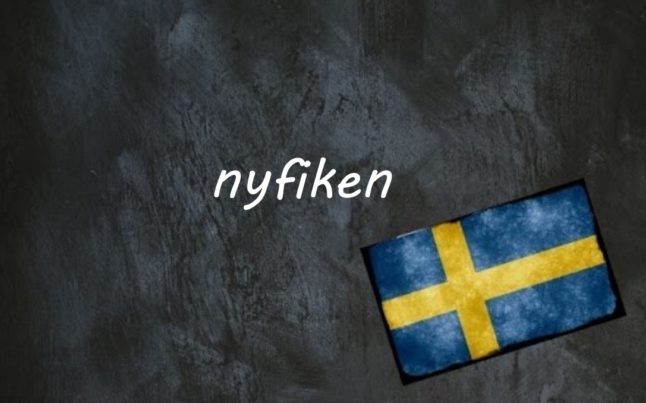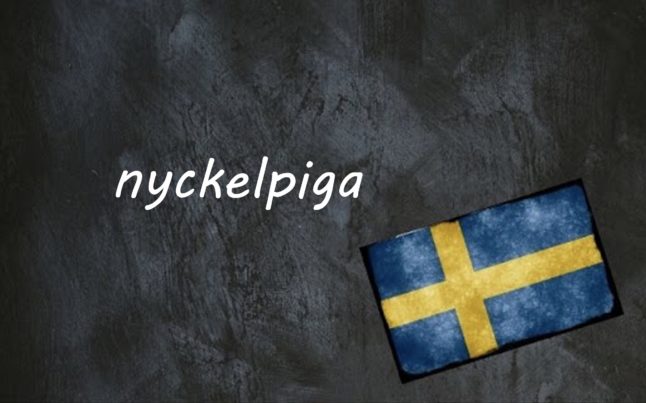Nyfiken is the Swedish adjective meaning “curious”.
You can use nyfiken as a standalone adjective, describing someone’s behaviour in general or at a specific point in time. So you could say: som barn var han alltid nyfiken (as a child, he was always curious/inquisitive) or nu är jag nyfiken (now I’m curious).
Note that Swedish nyfiken never has the meaning of “peculiar” or “strange”, which “curious” does in English. That means you can’t use nyfiken to describe an inanimate object (like a tree or a house) or an abstract concept.
The phrase en nyfiken flicka (a curious girl) always means that the girl is inquisitive, whereas “a curious girl” in English could either mean she is inquisitive or that she is peculiar.
The noun form of nyfiken is nyfikenhet, which translates in English as “curiosity”, and as an adverb it’s nyfiket (curiously/inquisitively). And an interesting synonym of nyfiken is vetgirig, which literally means something like “greedy to know” (in a positive sense).
Nyfiken is often followed by the preposition på, if you want to say “curious about” or “curious to”. Nyfiken på can then be followed by a noun, by typical question words (hur, vad, vem), or by att and a verb.
For example: jag är nyfiken på den strategin (I’m curious about that strategy), vi var nyfikna på vad vi skulle hitta i huset (we were curious about what we would find in the building), hon var nyfiken på att veta mer (she was curious to know more).
-
Don’t miss any of our Swedish words and expressions of the day by downloading our new app (available on Apple and Android) and then selecting the Swedish Word of the Day in your Notification options via the User button
If you’re thinking to yourself jag är nyfiken på ursprunget av ordet nyfiken (I’m curious about the origin of the word nyfiken), you’re in luck.
In fact, it comes from the word fika, but not the fika you’ve probably heard of (the beloved break for coffee and cakes). The coffee break fika comes from a reversal of the syllables of kaffe (coffee), but fika existed as a completely separate verb in Swedish long before they coined that noun.
In very old Swedish, fika meant “to hurry”, “to move fast”, or “to rush”, and over time its meaning changed from physical movement to a more metaphorical one, so that it came to mean “to strive (for something)” or “to work hard (for something)”. This was often combined with the preposition efter, for example han fikade efter beröm (he strove for praise).
The expression fika efter is rarely used in today’s Swedish because of how common the newer sense of fika has become. But it lives on in the adjective nyfiken, which literally means something like “striving to (know/learn) something new”.
Examples
Jag är nyfiken på henne
I’m curious about her
Grannarna såg jättenyfikna ut
The neighbours looked very curious
Villa, Volvo, Vovve: The Local’s Word Guide to Swedish Life, written by The Local’s journalists, is available to order. Head to lysforlag.com/vvv to read more about it. It is also possible to buy your copy from Amazon US, Amazon UK, Bokus or Adlibris.



 Please whitelist us to continue reading.
Please whitelist us to continue reading.
my Swedish relatives use nyfiken to describe someone who is nosey 🙂